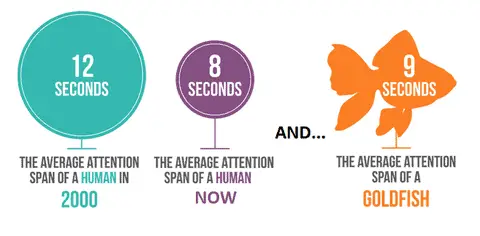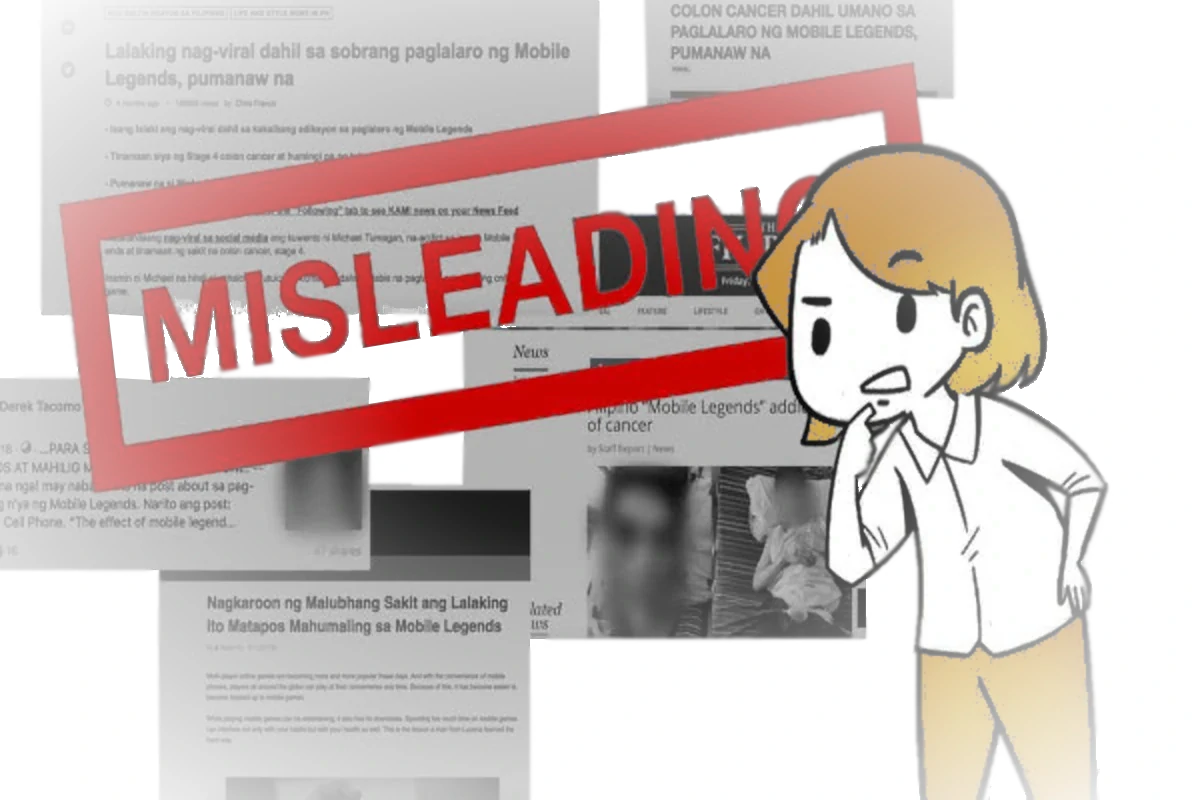Did you know that of every 10 people who read a headline, only 2 will read the rest of the content? Truth is, that number could be lower since most people won’t admit to only being headline-gazers.
Are you guilty as charged? I certainly am on occasion.
Well, thanks for at least reading this far past the headline!
According to a study conducted by Columbia University computer scientists, 59% of links shared on social media have never actually been clicked. People (or bots) just read the headline and share with-out reading a single word of text.
This begs the question, why do most of us assume that we get the whole truth from a single headline? Even when we know for sure, that there are so many misleading headlines out there ?
In this article, we’ll explore the latest science, expert opinions, and expert perspectives on why most people only read headlines.
Let’s Dive In.
Why Do People Only Read Headlines?
1. Shortening Attention Spans
Eight seconds.

Experts suspect that the ‘digital information era‘ has dropped a human’s attention span from 12 seconds in the year 2000, to just eight seconds today. A 30% reduction!
This is an all-time low figure, and is even less than your average pet goldfish’s attention span (which, for the record is nine seconds).
So, how does a human’s shortening attention span contribute to our likelihood of not reading past the headline?
We think that we don’t have the time to read the entire article, and if the headline aligns with our already pre-conceived notion of reality, then we’ll share it (without reading) as a means of re-enforcing our entrenched beliefs.
2. Information Overload
More content available can be overwhelming for readers who spend more time “only reading headlines”, and less time diving deeper into the body content and article specifics. Hunkering down on one article can be difficult when we’re given so many ‘clickbait’ headline options to choose from.
Too much content available on the internet has impacted the modern-day ‘content consumer’s’ attention span significantly.
While instant access to so much content is a good thing, our diminishing attention span has affected our desire for an in-depth analysis of the information we get. it’s easier to just assume the headline is true, than read the entire article to understand the nuanced specifics.
This is a bit concerning, as mass amounts of people are forming opinions based solely on sensationalized headlines, partial information, or overt false narratives.
[Here’s a guide we wrote on How To Use Social Media More Consciously]
3. The Internet Has Altered Our Brains
Collectively, as humans living in the 2020’s, our brain’s relatively newly formed digitalized lifestyle is impacting our physical brain structure.

Experts believe that our human brains cannot keep up with the sheer amount of information, news updates, and social media content competing for our attention. Our brains are naturally wired to crave information, and the internet has an infinite supply of new information daily.
This has forced us to train ourselves to have divided attention and shorted focusing ability. With our desire for instant gratification, we’re adapting to a strategy of short bursts of focus before moving onto the next thing.
For this reason, it is unsurprising that publishers, editors, and journalists need to grab our attention while they still have it, by carefully designing headlines that grab our attention. These types of attention grabbing headlines help make news media channels revenue, but don’t always correspond to the true conclusion of the supporting body text.
[Here’s a related article we wrote on why you probably are already addicted to the internet (and how to tell)]
4. Confirmation Bias
Another reason why people feel the need to share articles before they’ve even read them, is if the headline proclaims something they already believe.
Confirmation bias, which is the tendency of people to favor information that confirms their already existing beliefs, gives people the confidence to share an article by someone with a similar opinion.
This is dangerous!
This trend of “sharing” content because of an emotional headline, (without confirming the truth) creates a cycle of reinforced falsehoods among like-minded people. This is a great way to confuse popularity with truth.
Unfortunately, those who share articles based on the premise of confirmation bias, are less likely to change their minds even after presented with accurate information that counters their pre-existing prejudice!
The Science Behind Writing Headlines: CRAZY Facts
People often only believe, what it is that they want to know. And ignore facts that are inconvenient. News media knows this too well. In fact, news station and media business models depend on compelling headlines that “sell” the article.
Headline writers are incentivized by “selling” the story.
The best way to sell (and ask any used car salesman) is by leveraging emotion.
The more dramatic, gut wrenching, or shocking a headlines is, the better.
Headline expert Neil Patel says that “the key to earn heaps of social media shares is by giving your post an emotional headline.”
The term used for the best emotional driven headlines is “sensationalism”. Unfortunately sensationalism and truth, usually clash.
Sensationalism: How Headlines Manipulate Our Emotions
Truth be said, headlines will always be a part of the ‘magical allure’ to a great news piece.

A headline is what attracts a “passersby.”
A sensationalized headline forms the basis for casual social discussions and debated conversations among everyone that reads them.
Headlines are written to evoke either positive or negative emotions, and the more extreme the better.
There’s a sub-conscious element in how humans process news.
A headline affects our moods, vibes, and emotions, dictating how we approach and become entranced into following a piece of news.
Good headlines are meant to evoke a feeling that can draw us deeper into the article.
Content writers, editors, and newsrooms know this very well. That’s why they riddle almost every headline, both in print and online, with sensationalism.
The Oxford Dictionary defines sensationalism, especially in journalism, as “the presentation of stories in a that is intended to provoke public interest or excitement, at the expense of accuracy.”
Essentially, sensationalism is an ‘editorial bias’ that the national news and mass media practice to overhype news topics and events. This sensationalism headline strategy often manipulates the truth which is told in the body content. Sensationalism is often looked at as a contradiction to the standards of professional journalism.
Mass media often apply sensationalism to pry on our emotions and manipulate our perspective on reality.
Sensationalized headlines are designed in a way that is appeals through text to the reader’s emotions, motivating us to look at a story from a certain perspective.
You can always “feel” sensationalism in a media organization’s choice of words, language, exaggerated facts, or by how they use exciting or shocking language to make stories more exciting than they really are.
Prying on our emotions helps media sources boost clicks, shares, and viewership. All metrics aligned with profitability.
The more the reads, clicks, and viewership a certain content gets, the more traffic a news source gets, and the more their revenue.
The Business of How Headlines Pay

Grabbing peoples attention has always been the core driving force in the business of news media and storytelling.
Headlines are at the center of this, acting as “bait” for drawing in readers.
News sites are supported by advertisers.
Have you noticed that there are advertisements on every news site?
For more on how News Channels make money, here’s another article we wrote
1. The more clicks a news article gets, the more “traffic” goes to the website.
2. The more traffic that a website gets, the more impressions (views) the advertisements get.
3. The more impressions (views) advertisements get, the more money the advertisers will pay to advertise on the news website.
News is a business like any other. It needs to sustain itself financially.
For this reason, journalists write “clickbait” headlines to boost traffic, thus increasing revenue in the process. But sometimes clickbait headlines can come at the expense of the truth.
The more shocking and controversial the headline is, the greater the ’emotional trigger’ for news consumers—and the more clicks.
That’s how clickbait headlines work.
Often news organizations don’t set out to be sensationalists. It’s just that their business models lead them in that direction.
However, the fact that most people rarely read past the headline (or bother fact-checking) has birthed many “fake news” websites and other mis-information, dis-information, and falsely believed conspiracies.
News sources compete for our attention by using sensational headlines because it is what’s most likely to make us check out the article out in the first place. Regardless if the headline is true or not.
Where Are Most People Reading Headlines ?
It was only 10-15 years ago that almost all news media was consumed on the radio, television, or in the newspapers. But with the expansion of technology, smart phones, and the new digital age, news and headline reading have changed rapidly.
1. Reading Headlines On The Internet

The internet is the collective consciousness of the world and that means there’s lots of perspectives.
If you look deep enough, you can find headlines on the same story that sell completely different angles.
This can be a good thing if you know what to look for. But if you’re only reading your news from a single source, then iInternet headlines can become more dangerous and can warp your perception of reality.
This shouldn’t be surprising. We all know there is more than one side to every story, yet millions of us stick to one news network and only receive one angle on the truth.
Most Americans prefer to visit their favorite news websites directly, and do not read from multiple sources as one might expect in order to gain a deeper understanding from multiple perspectives.
2. Reading Headlines on Social Media
We have so much information at our fingertips today, with social media being our news manager.

In fact, nearly 64.5 percent of the over 2.4 billion internet users receive their every news from Facebook, Instagram, YouTube, Twitter, and Snapchat, making social media the primary source of info online.
While only focusing on the headline is nothing new, (we have been doing so even with traditional ‘print’ media), it is more prevalent in social media today, especially Twitter and Facebook.
Perhaps, it’s due to how fast massive amounts of information gets presented to us in an age when our attention is being pulled in every direction.
When most people click on a story, either on Twitter or Facebook, they rarely read the whole body. A lot of us don’t even make it midway.
It’s so easy to ‘share’ or tweet out links with a simple click of a button. Unfortunately, this trend has become among social media’s defining characteristics. It also creates a tend in digital falsehoods.
This is because content publishers and journalists can easily manipulate their readers, whether intentionally or not. “Clickbait headlines” that boost social media company profits have certainly diminished the value of news.
Today, journalists and publishers put more emphasis on creating the starkest and wittiest “eye-catching” lead sentence often ignoring or diminishing the content in the rest of the article.
It’s a business model for them, but it dumbs down good stories, misleads masses, and makes social media news very unreliable.
Final Thoughts: Why (most) People Only Read Headlines
Of course, a headline determines how many people will read a whole article. But, content writers, editors, publishers, and journalists have rethought this approach altogether.
For the most part, media outlets no longer insist on giving readers extensive information or even the full truth. Instead, they are now focusing on crafting an appealing headline that’s clickable by as many internet users as possible.
Even if that means using confirmation bias and tribalism to split the population into different segments.
Ultimately, the only way to truly understand what’s going on in a news article, is if we take the time to read the content for ourselves.
And it’s our responsibility to do exactly that !
Loved what you read?
Hit that share button and let the world in on the secret – we’d be thrilled!
Got thoughts? We’re all ears for your feedback, corrections, or a good old chat. Don’t be shy; drop us a line.
And hey, don’t miss out on our curated list of must-reads in the recommended books section.
Big thanks for diving in with us today!



